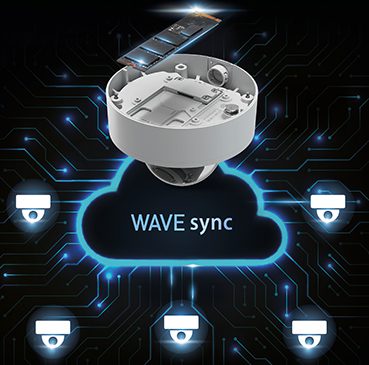A video surveillance camera does not consume much energy. However, large surveillance systems can include dozens of servers, a substantial amount of energy.
Hence Hanwha Vision, the video product manufacturer, recently unveiled the SolidEDGE camera – a Solid State Drive (SSD)-based camera with an embedded server – that was designed around energy-saving principles for reduced environmental impact, the company says. One of the features of the SolidEDGE camera is its serverless setup, which reduces energy consumption and total cost of ownership. It cuts out the traditional need for separate servers in temperature-controlled data centres, which consume considerable amounts of electricity, the makers say.
Andy Ryu, Head of Product Management at Hanwha Vision, said: “The recent eighth Annual Global Conference on Energy Efficiency saw 45 countries endorse the Versailles Statement on this being ‘the crucial decade for energy efficiency’. Hanwha Vision has always strived for innovation to advance tomorrow. We are incorporating energy-efficient features into our solutions to support global sustainability and energy security targets without compromising on safety.”
Hanwha Vision has integrated solid storage directly into the body of the camera and pre-installed the Wisenet WAVE video management system, which can run on the edge. Thecamera can also connect to and record video from up to five extra guest cameras. This consolidation of functions not only provides impactful energy savings, but also ensures that video data and recordings are captured without delay.
Analytics with Edge AI
The growth in surveillance technology has led to unprecedented data being generated daily – more than 2,500 petabytes of data as of 2019. Storing and analysing this data consumes energy as servers in data centres require power. Hanwha Vision says it’s tackling this by incorporating edge artificial intelligence (Edge AI) into many of its cameras. Using Edge AI, Hanwha Vision’s cameras can control and transmit important metadata, reducing the operating load on the server and minimising overall power consumption. This also eliminates common energy burdens caused by network overloads or storage over-capacity. The company’s AI network video recorders (NVR) add to the efficiency of data analysis, enabling identification and retrieval of relevant information. This results in increased operational efficiency and the firm adds energy savings.
Traditionally, surveillance cameras require well-lit sites to produce quality recordings. This often leads to businesses leaving lights on in stores and outside store fronts, an unnecessary use of energy. In fact, the European retailer SPAR Austria estimated an annual energy consumption reduction of one million kilowatt hours, by reducing storefront advertising and outside lighting hours across more than 1,500 stores.
Hanwha Vision’s edge devices use AI-based, low-light image processing. This enables clear recordings in dim conditions and eliminates the need to maintain a well-lit place solely for surveillance, the makers add.










